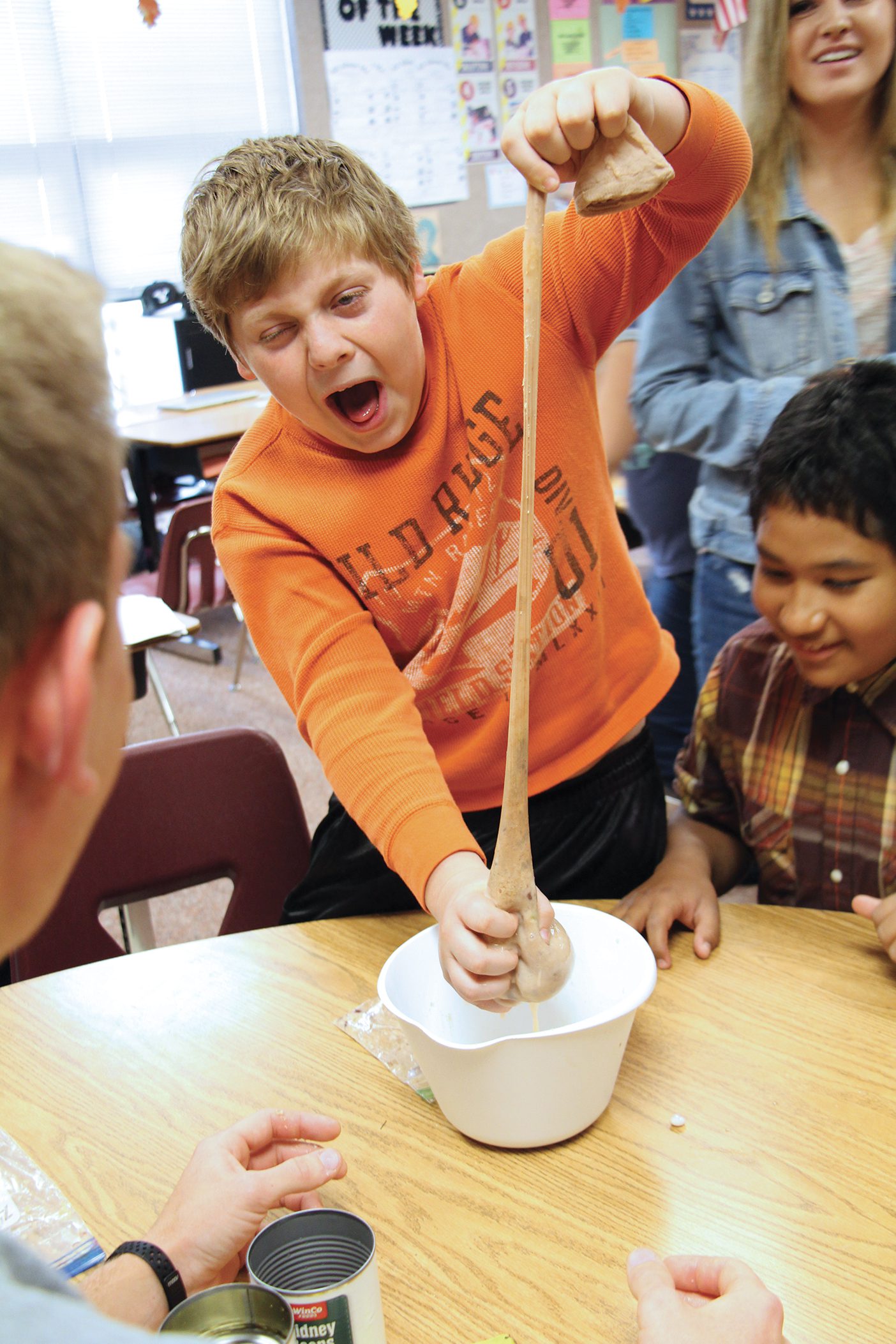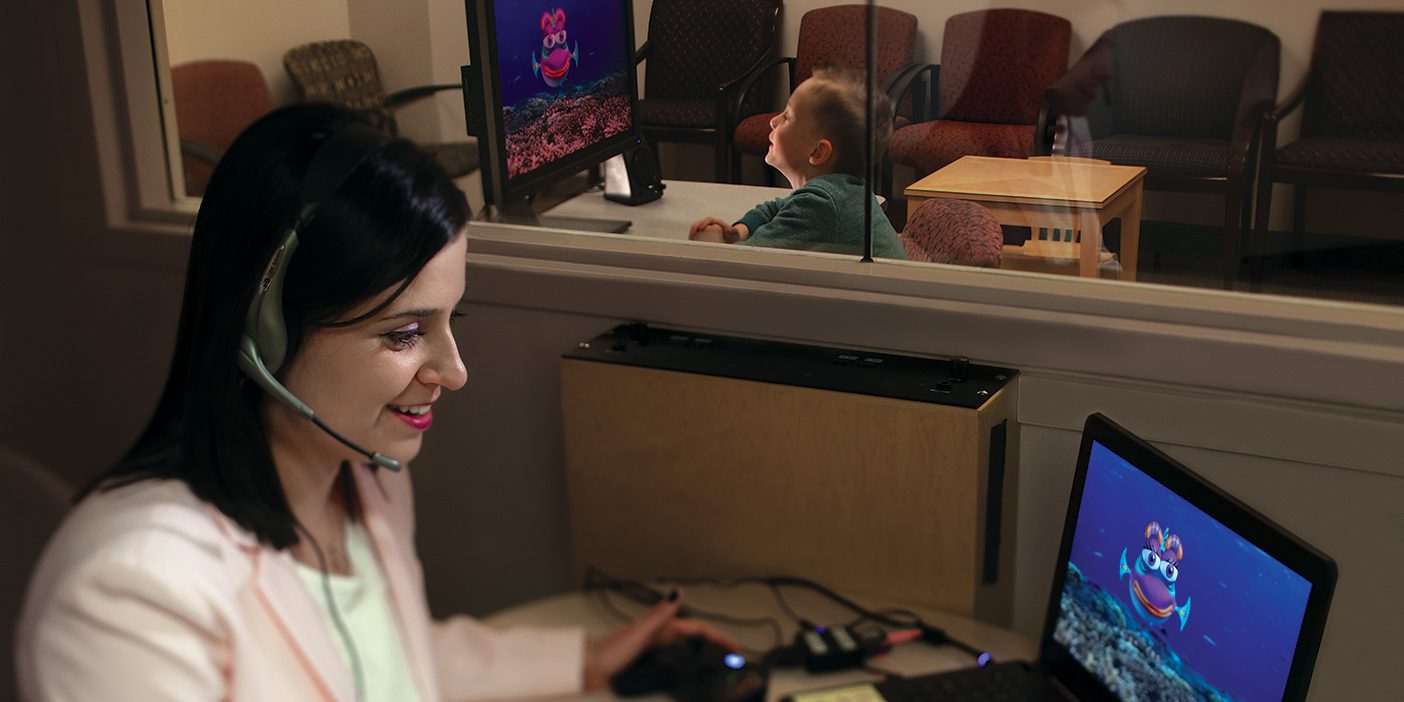
Things get a little . . . squishy in Anatomy Academy, a relatively new service organization at the Y—and already one of the biggest, in both volunteers and volunteer hours.
Like when the fifth-grade Anatomy Academy participants at Odyssey Charter School squeeze a smooshed banana-cracker mixture through nylon panty hose. Liquid seeps through the stocking. Gasps and guttural noises ensue. At last, a student finds the words:
“Ewwwwwww, gross!”
It’s the gastrointestinal-tract object lesson led by BYU Anatomy Academystudent mentors. Last week was all about teeth—they had the kids measuring out the mounds of sugar in their favorite foods. In store ahead: finding their own blood type, using ophthalmoscopes to check out each other’s retinas, and heart day, when the kids carry red or blue balls (as cells) through a giant obstacle course, simulating blood flow.
Anatomy Academy, the brainchild of former BYU physiology and developmental biology professor Jonathan J. Wisco, is part health class, part science class, and part PE. Founded in 2012, it was Wisco’s response to learning physical education was being cut from his 12-year-old daughter’s school district. The nonprofit sends college students to elementary-school classrooms to teach lessons over seven weeks. The goal: combating childhood obesity and promoting healthy lifestyles. And it seems to be working.
Wisco tracks the program’s impact on both elementary schoolers and mentors. Kids have shared all kinds of anecdotes, like giving up sugary drinks and even being wary of campfire smoke—the lung lesson leaves an impression.
“Anatomy Academy changes the way kids look at school,” says former BYU mentor Chloe Caughman Read (BS ’17). “School is a lot of ‘Sit down, look at a picture of this, and take notes.’ But Anatomy Academy is ‘Here’s a real kidney, and you are going to hold it and, unfortunately, smell it.’”
And the BYU-student mentors? The program, administered by Y-Serve and the McKay School of Education, attracts both pre-med and pre-dental students, as the program fulfills service-learning requirements set by the American Association of Medical Colleges. “Every mentor has been asked about Anatomy Academy at their professional-school interview, without exception,” says Wisco, now a professor in the Boston University School of Medicine.
Simplifying anatomy concepts for kids, says former BYU mentor Sean A. George (BS ’17), taught him how to help patients “understand and take initiative over their own healthcare.”
Presenting at national conferences, Wisco and his BYU student coordinators have expanded Anatomy Academy’s reach to 14 universities in 10 states. The Anatomy Academy chapter at BYU remains the largest in the country.












